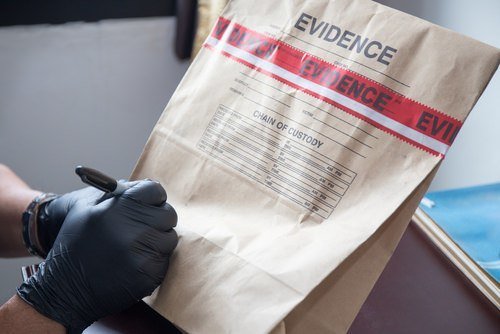
In State v. Jennings, the WA Court of Appeals held the trial court’s exclusion of a shooting victim’s toxicology report indicating the victim had methamphetamine in his body at the time of his death did not violate the defendant’s constitutional right to present a defense.
BACKGROUND FACTS
On the date of the incident, the defendant Mr. Jennings accompanied his friend Mr. Redman to get Redman’s car from a mobile home in Puyallup, Washington. Redman had been living there, but had recently been kicked out. Drug activity occurred there. Jennings was there to defuse any hostilities between Redman and others at the house. Jennings armed himself with bear spray and a gun.
When they arrived, Jennings was on high alert. He knew violent events had recently occurred there. His friend Mr. Redman got into an argument with Mr. Burton, an individual at the house. Redman had his gun out. Jennings was familiar with the behavior of people who consumed methamphetamine. He realized that both Redman and Burton were high on methamphetamine and acting aggressively.
Burton and Redman argued about Redman’s car and then began to scuffle, wrestling in the foyer of the house. Jennings sprayed his bear spray at them to break up the fight. Burton then turned around and started walking toward Jennings, who backed up. Jennings believed Burton had Redman’s gun.
Jennings feared for his life. He was afraid Burton was reacting violently because he was high on methamphetamine. Jennings fired his gun and hit Burton twice. Burton died at the scene shortly after the shooting and before the ambulance arrived.
Jennings was arrested the next day. He was charged with second degree intentional murder (RCW 9A.32.050(1)(a)), second degree felony murder predicated on second degree assault (RCW 9A.32.050(1)(b)), and unlawful possession of a firearm.
At trial, Jennings claimed at trial that he shot Burton in self-defense. However, the judge excluded the toxicology report showing that Burton had methamphetamine in his body at the time of his death. A jury found Jennings guilty of second degree felony murder.
Jennings appealed on numerous issues, including arguments that the trial court violated his constitutional right to present a defense by excluding a toxicology report showing that Burton had methamphetamine in his body at the time of his death.
COURT’S ANALYSIS & CONCLUSIONS
The Court of Appeals began by emphasizing that criminal defendants have a constitutional right to present a defense under the Sixth Amendment. Furthermore, evidence of self-defense must be assessed from the standpoint of the reasonably prudent person standing in the shoes of the defendant, knowing all the defendant knows and seeing all the defendant sees. Finally, the court reasoned that evidence that might impact a defendant’s assessment of the danger presented, like the victim’s prior specific violent acts, is admissible only if known to the defendant when the incident occurred.
“In analyzing the Sixth Amendment right to present a defense, we balance the State’s interest in excluding the toxicology report against Jennings’s need for evidence showing that his subjective fear was reasonable,” said the Court of Appeals.
The Court further reasoned that in this case, the toxicology report did not have extremely high probative value and it did not constitute Jennings’s entire defense. “At trial, Jennings testified that what he observed on the day of the shooting gave rise to his subjective fear . . . his belief that Burton was high on methamphetamine,” said the Court.
“Jennings has not shown that there was a reasonable probability that any additional corroboration from the toxicology report would have materially changed the result at trial,” said the Court. “We hold that even if the trial court abused its discretion by excluding the toxicology report under ER 401 and 402, this ruling was harmless error.”
With that, the Court of Appeals upheld Mr. Jennings’ conviction.
My opinion? Evidentiary and legal issues aside, these facts are terribly tragic. My heart goes out to the friends and families of all who were impacted by this. From a legal standpoint, however, It appears the WA Court of Appeals conducted a basic balancing test under Washington’s Rules of Evidence and determined that the toxicology report of the victim’s meth/blood levels was neither probative nor relevant at trial.
Under Washington’s Rules of Evidence, relevant evidence is defined in ER 401 as “evidence having any tendency to make the existence of any fact that is of consequence to the determination of the action more probable or less probable than it would be without the evidence. ER 402 provides that evidence which is not relevant is not admissible. Finally, ER 403 provides that relevant evidence may be excluded if its probative value is substantially outweighed by, among other things, the danger of unfair prejudice.
Here, the Court of Appeals was convinced that Mr. Jennings’ self-defense theory was properly supported by his testimony that he responded in self-defense to the victim’s meth-induced attack. Therefore, no other evidence was necessary to admit more evidence that the victim was high on meth. Jennings’ testimony, by itself, was enough. Any additional evidence on that issue was therefore cumulative, repetitive, unnecessary and potentially prejudicial to the State’s case under ER 403.
Please contact my office if you, a friend or family member face criminal charges and self-defense is a possible defense. It’s important to hire an experienced criminal defense trial attorney who understands the law, the rules of evidence and how both contribute to trial defenses.






